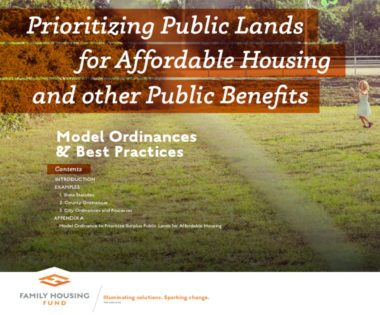Building on What We Have: New Resource for Prioritizing Public Lands for Affordable Housing
The Twin Cities region needs a full-spectrum affordable housing strategy to maintain the quality of life many enjoy and expand housing opportunities for those with low and moderate incomes. Doing more to meet housing needs requires us to think creatively and look for new opportunities to align and maximize the impact of public resources. Surplus, vacant, and underutilized public lands are precious community resources and must be part of the solution. Let’s build on what we already have.
Why focus on public lands?
In strong markets, development on public sites can expand opportunities for affordability in neighborhoods where land costs make it difficult for mission-driven developers to compete for sites. Discounting land costs for affordable housing can make projects more financially feasible and increase their likelihood of completion. In weaker markets, publicly-owned parcels can be used to catalyze development and seed revitalization activities.
What’s new about this approach?
While many public agencies have existing systems in place to redevelop or sell vacant and foreclosed properties for affordable housing, our next-stage opportunity is to assess the larger portfolio of potentially available land in the region, across agencies, and to intentionally prioritize it for affordable housing development wherever appropriate. A coordinated, regional strategy would build on the individual steps that many cities, counties and state agencies are already taking
What can we do?
Many other regions that are facing rising land costs have implemented policies to prioritize surplus or underutilized public lands for affordable housing. They point us to three clear next steps to pursue this strategy:
- Inventory: To understand the scale of the opportunity, we first need to inventory the sites available. Very few public agencies in the region have a complete list of their real estate assets, much less an assessment of the viability and potential of their use for affordable housing or other development.
- Analyze: Not all available sites are suitable for development. Analyzing sites and categorizing them based upon factors that influence their development potential, including scale, existing use, surrounding uses and neighborhood form and infrastructure needs, among other factors, is important. Working together as a region, we can assess the full picture of opportunity rather than looking one project at a time, or one agency at a time.
- Position for success: It is important for agencies to have clear processes and procedures, as well as appropriate staff capacity, to manage an effective asset management process that prioritizes affordable housing. In designing Requests for Proposals and other kinds of solicitations, agencies should focus on smoothing the process for affordable housing developers and providing incentives for affordability.
